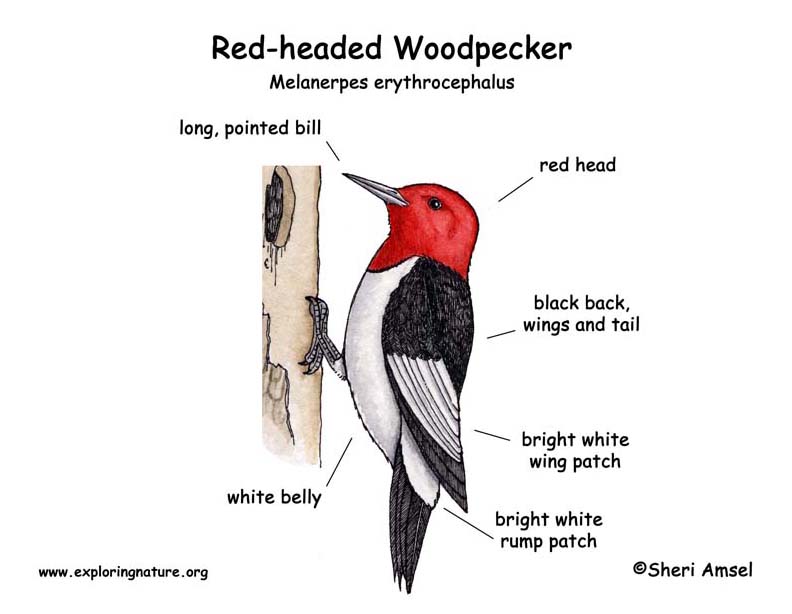

They breed from southern Canada to Gulf Coast, east of the Rocky Mountains and west of New England and eastern Canada. They may spend the winter in the southern part of their range.
They live in open woods, farms, and orchards.
They are a mid-sized woodpecker, with a red head. They have a black back, wings and tail and bright white wing and rump patches.
They perch on dead standing trees watching for insects. They catch insects in flight.
They also eat seeds, nuts, berries, fruit, insects, bird eggs, nestlings, and even mice. They are thought to be the most omnivorous woodpecker.
They nests in dead tree holes. Females lay 4 - 7 eggs.
Kingdom: Animalia
Phylum: Chordata
Subphylum: Vertebrata
Class: Aves/Subclass: Neornithes
Order: Piciformes
Suborder: Pici
Family: Picidae/Subfamily: Picinae
Genus: Melanerpes
Species: M. erythrocephalus
When you research information you must cite the reference. Citing for websites is different from citing from books, magazines and periodicals. The style of citing shown here is from the MLA Style Citations (Modern Language Association).
When citing a WEBSITE the general format is as follows.
Author Last Name, First Name(s). "Title: Subtitle of Part of Web Page, if appropriate." Title: Subtitle: Section of Page if appropriate. Sponsoring/Publishing Agency, If Given. Additional significant descriptive information. Date of Electronic Publication or other Date, such as Last Updated. Day Month Year of access < URL >.
Amsel, Sheri. "Woodpecker (Red-headed)" Exploring Nature Educational Resource ©2005-2024. December 13, 2024
< http://exploringnature.org/db/view/105 >

